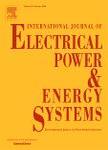版权所有:内蒙古大学图书馆 技术提供:维普资讯• 智图
内蒙古自治区呼和浩特市赛罕区大学西街235号 邮编: 010021

作者机构:Dr BC Roy Engn Coll Dept Elect Engn Durgapur 713206 W Bengal India Jadavpur Univ Dept Elect Engn Kolkata 700032 W Bengal India
出 版 物:《INTERNATIONAL JOURNAL OF ELECTRICAL POWER & ENERGY SYSTEMS》 (国际电力与能源系统杂志)
年 卷 期:2013年第44卷第1期
页 面:282-292页
核心收录:
主 题:Emission dispatch Fuel cost Gravitational search algorithm Law of gravity Law of motion Wind turbine
摘 要:In this paper an economic emission load dispatch (EELD) problem is solved to minimize the emission of nitrogen oxides (NOx) and fuel cost, considering both thermal generators and wind turbines. The effects of wind power on overall NOx emission are also investigated here. To find the optimum emission dispatch, optimum fuel cost, best compromising emission and fuel cost, a newly developed optimization technique, called Gravitational Search Algorithm (GSA) has been applied. GSA is based on the Newton s law of gravity and mass interactions. In GSA, the searcher agents are collection of masses which interact with each other using laws of gravity and motion of Newton. IEEE 30-bus system having six conventional thermal generators has been considered as test system. Two extra wind turbines are also placed at two weak load bus of the system. Two Weak load buses have been selected based on their L-index value. After placing the wind power sources, those buses have been considered as generator bus. Minimum fuel cost, minimum emission and best compromising solution obtained by GSA are compared with those of biogeography-based optimization (BBO). The results show that the GSA surpasses the other available techniques in terms of solution quality and computational efficiency. (C) 2012 Published by Elsevier Ltd.